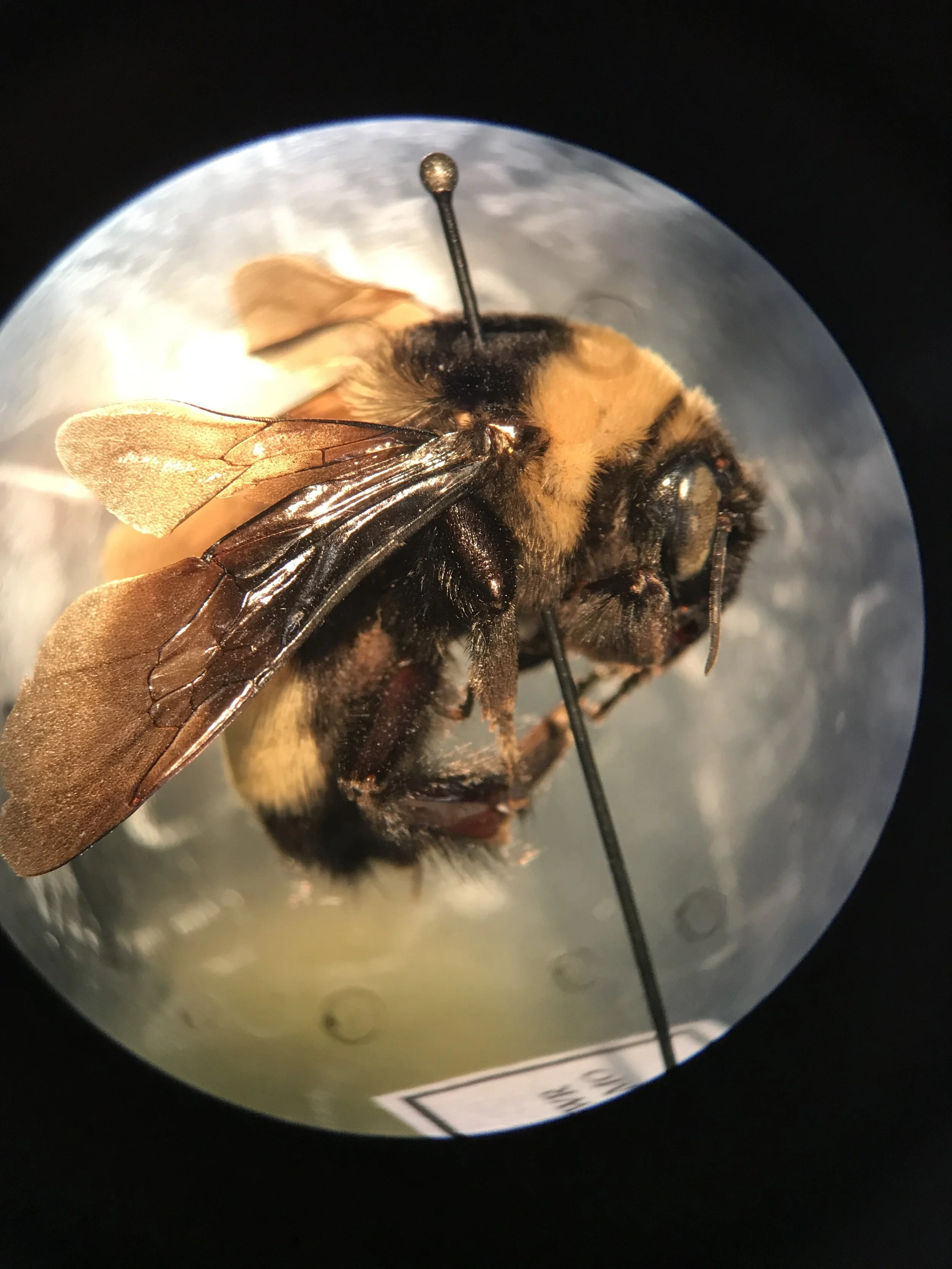Midwest Bee Course in Review
Midwest Bee Course: A Review
Having been in the lab for a few years now, I knew bees came in all shapes, sizes, and colors. That still didn’t prepare me for the brilliant blues, shining greens, and mother of pearl banding I saw on our local bees at the Midwest Bee Course this week. Led by Mike Arduser, the course brought together 15 bee-enthusiasts from academia, state and federal agencies, and consulting companies for a full week of bee identification and taxonomy that focused specifically on the bees we would encounter in the midwest. The five long days left my head spinning with trying to remember the characteristics that separated the main families of bees, but I also had many highlights and learned some lessons that can be applied to bees and maybe just life:
1. No matter how old I get, I will always be attracted to shiny objects (see: bright blue and green Halictidae bees).
2. Never underestimate small details – they can make the difference between species.
3. Nothing is more supportive than a room full of people all trying to figure out something that they don’t know.
4. If a characteristic isn’t there, don’t force your eyes to see it.
5. Alternatively, if a characteristic is supposed to be there, fake it ‘til you make it, and then ask your neighbor for help.
6. You haven’t lived until you’ve experienced the joy that comes from spending 30 minutes trying to figure out the species of bee you’re holding and find out that you’re right.
7. You haven’t lived until you’ve experienced the heartbreak of spending 30 minutes trying to figure out the species of bee you’re holding and find out you incorrectly identified the wrong species (let alone genus or family or sex).
Parasitic female Coelioxys bee
8. Bees are beautiful and they have evolved amazing structures to allow them to function: hairy legs for carrying pollen, long ovipositors for laying eggs in other bees’ nests, ridged mandibles and teeth for digging in soil, hooked wings for coordinated flight, and antennae for searching out mates and sensing their environment.
The Midwest bee course was a great week of learning bee taxonomy and networking with fellow Midwest bee researchers, and I can’t wait to put my knowledge to the test this summer.
Nomia nortoni’s colorful mother-of-pearl banding.














